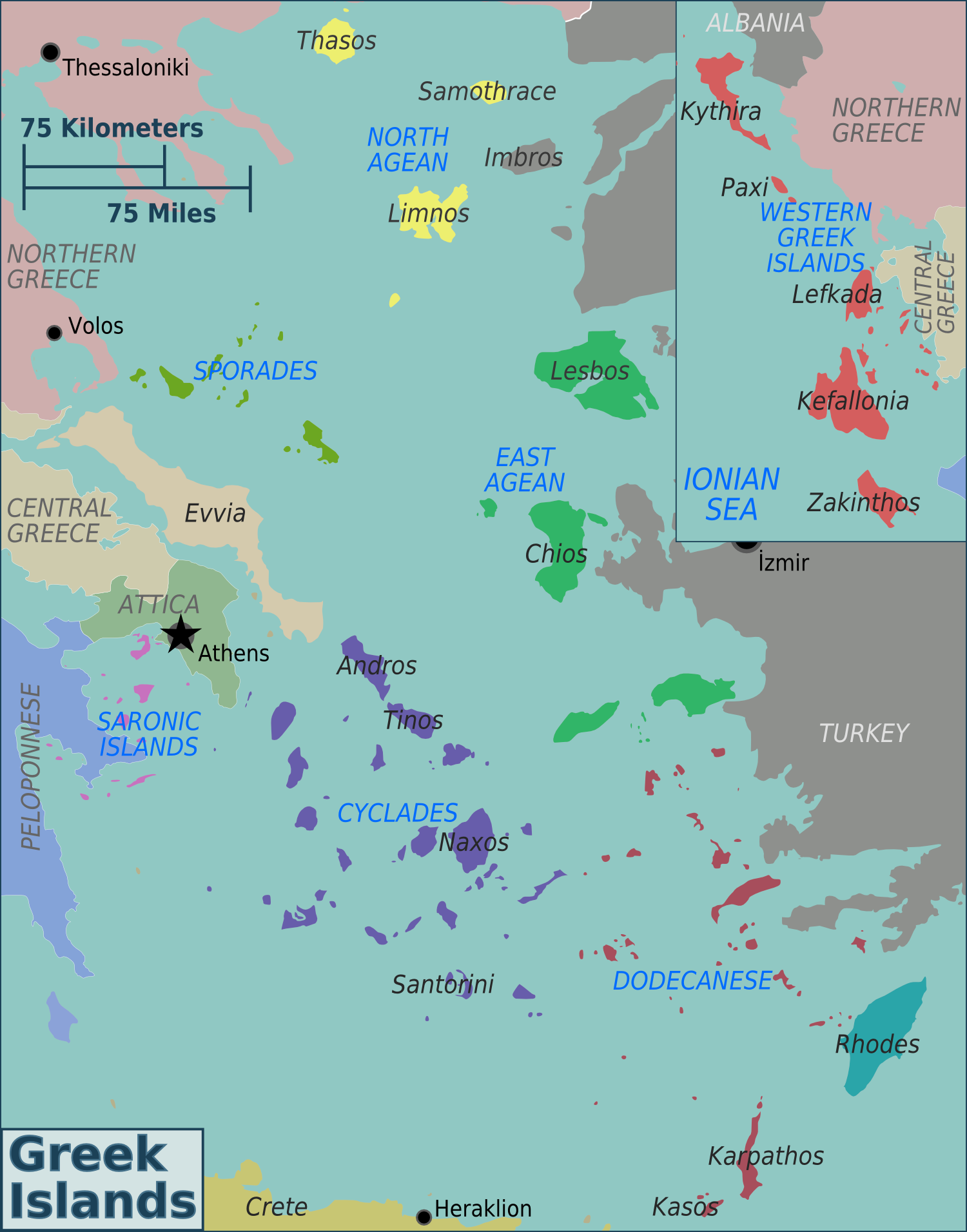|
Nisiotika
Nisiotika ( el, νησιώτικα, meaning "insular (songs)") are the songs and dances of Greek islands with a variety of styles, played by ethnic Greeks in Greece, Turkey, Australia, the United States and elsewhere. The lyre is the dominant folk instrument along with the laouto, violin, tsampouna and souravli with widely varying Greek characteristics. Representative musicians and performers of Nisiotika include: Mariza Koch, credited with reviving the field in the 1970s, Yiannis Parios, Domna Samiou and the ''Konitopoulos family'' (Giorgos and Vangelis Konitopoulos, Eirini, Nasia and Stella Konitopoulou). There are also prominent elements of Cretan music on the Dodecanese Islands and Cyclades. Notable artists ''Composers:'' * Giorgos Konitopoulos * Vangelis Konitopoulos * Stathis Koukoularis *Yiannis Parios * Nikos Ikonomidis * Stamatis Hatzopoulos ''Singers:'' *Glykeria * Vagelis konitopoulos * Stella Konitopoulou *Yiannis Parios *Domna Samiou *Mariza Koch * Nasia Koni ... [...More Info...] [...Related Items...] OR: [Wikipedia] [Google] [Baidu] |
Yiannis Parios
Yiannis Parios ( el, Γιάννης Πάριος) is a Greek singer, with a career spanning five decades. Biography Yiannis Parios was born Ioannis Varthakouris (Ιωάννης Βαρθακούρης) on the island of Paros. He made his first appearance as a singer in 1969. Yannis Parios was the first Greek singer to perform Alain Barriere's song "Tu t'en vas" with Greek lyrics. Under its new title "Tora pia", the song was a hit, on an unprecedented scale for the time, and it marked the beginning of a new age in which many Greek singers adapted "foreign" melodies to Greek lyrics. Yiannis Parios has worked with many of the leading Greek composers, including Manos Loizos, Giorgos Hatzinasios, Stavros Xarchakos, Stamatis Spanoudakis, Yorgos Katsaros, Marios Tokas, Yannis Spanos and Mikis Theodorakis. He has written lyrics of his own, and often composed music. A number of his songs have been translated and sung abroad. One of his releases holds the record for Greek sales ... [...More Info...] [...Related Items...] OR: [Wikipedia] [Google] [Baidu] |
Greek Islands
Greece has many islands, with estimates ranging from somewhere around 1,200 to 6,000, depending on the minimum size to take into account. The number of inhabited islands is variously cited as between 166 and 227. The largest Greek island by area is Crete, located at the southern edge of the Aegean Sea. The second largest island is Euboea or Evvia, which is separated from the mainland by the 60m-wide Euripus Strait, and is administered as part of the Central Greece region. After the third and fourth largest Greek islands, Lesbos and Rhodes, the rest of the islands are two-thirds of the area of Rhodes, or smaller. The Greek islands are traditionally grouped into the following clusters: the Argo-Saronic Islands in the Saronic Gulf near Athens; the Cyclades, a large but dense collection occupying the central part of the Aegean Sea; the North Aegean islands, a loose grouping off the west coast of Turkey; the Dodecanese, another loose collection in the southeast between Crete and T ... [...More Info...] [...Related Items...] OR: [Wikipedia] [Google] [Baidu] |
Cyclades
The Cyclades (; el, Κυκλάδες, ) are an island group in the Aegean Sea, southeast of mainland Greece and a former administrative prefecture of Greece. They are one of the island groups which constitute the Aegean archipelago. The name refers to the islands ''around'' ("cyclic", κυκλάς) the sacred island of Delos. The largest island of the Cyclades is Naxos, however the most populated is Syros. History The significant Late Neolithic and Early Bronze Age Cycladic culture is best known for its schematic, flat sculptures carved out of the islands' pure white marble centuries before the great Middle Bronze Age Minoan civilization arose in Crete to the south. (These figures have been looted from burials to satisfy a thriving Cycladic antiquities market since the early 20th century.) A distinctive Neolithic culture amalgamating Anatolian and mainland Greek elements arose in the western Aegean before 4000 BCE, based on emmer and wild-type barley, sheep and goats, ... [...More Info...] [...Related Items...] OR: [Wikipedia] [Google] [Baidu] |
Sousta
Sousta ( gr, Σούστα, links=no) is a Greek folk dance, performed at weddings as an activity of courtship between husband and wife. It originates from Ancient Greece, and holds prominence in Dodecanese Islands, and broader Aegean region. It is the second most common Greek dance, after the Syrtos, with many Greek islands and villages adopting their own version. The performance of the dance reflects various gender roles, inter-played with values of romance and marriage. The Sousta acted as a socialisation process between the youth of a village, evolving into a dance central to these youth as they grew up and formed relationships with others. Socially, the Sousta also functioned as a visible verification of courtship, namely paying respects to the wife and her family. The Sousta is most commonly performed as a three-step dance, with a 'hopping' motion and crossed-over hands. There are elements of eroticism and courtship acted out in the dance, which is usually performed by pair ... [...More Info...] [...Related Items...] OR: [Wikipedia] [Google] [Baidu] |
Syrtos
Syrtos ( el, συρτός, ''syrtos'' (also ''sirtos''); plural , ''syrtoi'' (also ''sirtoi''); sometimes called in English using the Greek accusative forms ''syrto'' (also ''sirto''); from the el, links=no, σύρω, ''syro'' (also ''siro''), "to drag he dance) is – in classical and modern Greece – a traditional dance in which the dancers link hands to form a chain or circle, headed by a leader who intermittently breaks away to perform improvised steps. Syrtos, along with its relative kalamatianos, are the most popular dances throughout Greece and Cyprus, and are frequently danced by the Greek diaspora worldwide. They are very popular in social gatherings, weddings and religious festivals. Syrtos and kalamatianos use the same dance steps, but the syrtos is in time and the kalamatianos is in time, organized in a ''slow'' (3 beat), ''quick'' (2 beat), ''quick'' (2 beat) rhythm. Syrtos and kalamatianos are line dances and circle dances, done with the dancers in a ... [...More Info...] [...Related Items...] OR: [Wikipedia] [Google] [Baidu] |
Astypalaia Goodbye Asty65
Astypalaia (Greek: Αστυπάλαια, ), is a Greek island with 1,334 residents (2011 census). It belongs to the Dodecanese, an archipelago of fifteen major islands in the southeastern Aegean Sea. The island is long, wide at the most, and covers an area of 97 km2."Astypalaia" in ''The New Encyclopædia Britannica''. Chicago: Encyclopædia Britannica Inc., 15th edn., 1992, Vol. 1, p. 651. Along with numerous smaller uninhabited offshore islets (the largest of which are Sýrna and Ofidoussa), it forms the Municipality of Astypalaia, which is part of the Kalymnos regional unit. The municipality has an area of 114.077 km2. The capital and the previous main harbour of the island is Astypalaia or Chora, as it is called by the locals. Name Astypalea was believed to be named after Astypalaea, an ancient Greek mythological figure. The island is known in Italian as ''Stampalia'' and in Ottoman Turkish as ''İstanbulya'' (استانبوليه) Geography The coasts ... [...More Info...] [...Related Items...] OR: [Wikipedia] [Google] [Baidu] |
Stella Konitopoulou
Stella or STELLA may refer to: Art, entertainment, and media Comedy *Stella (comedy group), a comedy troupe consisting of Michael Showalter, Michael Ian Black and David Wain Characters *Stella (given name), including a list of characters with the name Films *''Miss Stella'', 1991 Indian Malayalam film, directed by I. Sasiand * ''Stella'' (1921 film), directed by Edwin J. Collins * ''Stella'' (1943 film), with Zully Moreno * ''Stella'' (1950 film), with Ann Sheridan and Victor Mature * ''Stella'' (1955 film), directed by Michael Cacoyannis, starring Melina Mercouri * ''Stella'' (1976 film), written and directed by Luigi Cozzi * ''Stella'' (1983 film), directed by Laurent Heynemann, see Victor Lanoux * ''Stella'' (1990 film), starring Bette Midler * ''Stella'' (2008 film), directed by Sylvie Verheyde Literature *Stella, novel attributed to Haitian author Emeric Bergeaud * ''Stella'' (novel), by Jan de Hartog, made into the 1958 film '' The Key'' * ''Stella'' (Norwegian magazine), ... [...More Info...] [...Related Items...] OR: [Wikipedia] [Google] [Baidu] |
Vagelis Konitopoulos
Evangelos "Vangelis" Vourtzoumis (alternate spelling: Vaggelis) ( el, Βαγγέλης Βουρτζούμης) (born October 30, 1969) is a retired Greek professional basketball player. Professional career Vourtzoumis won three European titles on three different Greek teams. In 1993, he played with Aris and with them he won the FIBA Cup Winners' Cup against Efes, at Torino. In 1996, he played with Panathinaikos, and with them he was a winner of the EuroLeague championship at Paris. In 2001, he won the FIBA Saporta Cup championship with Maroussi. Vourtzoumis also won the Greek League championship in 1989, 1990, and 1991, and two Greek Cups, in 1990 and 1992, while playing with Aris. He also won the 1998 Greek League championship, and the 1996 Greek Cup title, with Panathinaikos. National team career Vourtzoumis had eight caps with the senior men's Greek national basketball team The Greece men's national basketball team ( el, Eθνική Oμάδα Καλαθοσφαίρ� ... [...More Info...] [...Related Items...] OR: [Wikipedia] [Google] [Baidu] |
Glykeria
Glykeria (born Glykeria Kotsoula, el, Γλυκερία; born 16 November 1953 in Agio Pnevma, Serres) is a Greek singer active in Greece and Cyprus, while also gaining fame in Israel, France, Turkey, Spain, and England. Her career has spanned over 30 years and is marked by several multi-platinum releases. On 14 March 2010, Alpha TV ranked Glykeria the third top-certified female artist in the nation's phonographic era (since 1960).''Chart Show: Your Countdown''. Alpha TV. Airdate: 14 March 2010 Biography Early Solo Career Glykeria began her career in 1974 working in the Athens Plaka music ''boites'' and gave performances with well-known artists, singing songs by M. Hadjidakis, M. Theodorakis, M. Loizos and others. She began her discographical career by signing with Lyra Music, releasing her first album alongside another rising artist Giorgos Gerolymatos called "Min Kaneis Oneira" (Don't Dream) in 1978. This release caused a stir in the industry, showcasing Glykeria's uniqu ... [...More Info...] [...Related Items...] OR: [Wikipedia] [Google] [Baidu] |
Stamatis Hatzopoulos
Stamatis ( el, Σταμάτης, links=no) is a given name and surname of Greek origin, a diminutive of Stamatios (Σταμάτιος). Notable people with the name Stamatis include: Given name * Stamatis Benas (born 1985), Greek basketball player * Stamatis Kalamiotis (born 1990), Greek footballer * Stamatis Katsimis (born 1982), Greek racing driver * Stamatis Kraounakis (born 1955), Greek music composer, producer, lyricist, writer and director *Stamatis Krestenitis (d. 1823), Greek revolutionary leader * Stamatis Sapalidis (born 1990), Greek professional footballer *Stamatis Spanoudakis (born 1948), Greek classical composer *Stamatis Voulgaris (1779-1842), Greek urban planner Surname *Alexis Stamatis (born 1960), Greek novelist, playwright and poet * Andreas Stamatis (born 1993), Greek footballer * Dimitrios Stamatis (other), multiple people *Jim Stamatis Jim Stamatis (born Kiriaki, Greece) is a retired U.S.-Greek soccer forward and the Chief Executive Officer of The ... [...More Info...] [...Related Items...] OR: [Wikipedia] [Google] [Baidu] |



